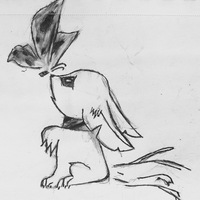
В художественном классе собрались ученики. Если у ребенка в руках 6 красок, то он всегда говорит
правду. Если 4, то всегда ложь. Первая ученица сказала: У нас у каждой одинаковое количество красок. Вторая сказала: У всех 30 красок. Третья сказала: Нет, у нас всех 26 красок. "Из этих троих одна сказала правду" Сколько всего учеников в классе? 0
0
 0
0
Ответы на вопрос
 Внимание! Ответы на вопросы дают живые люди. Они могут содержать ошибочную информацию, заблуждения, а также ответы могут быть сгенерированы нейросетями. Будьте внимательны. Если вы уверены, что ответ неверный, нажмите кнопку "Пожаловаться" под ответом.
Внимание! Ответы на вопросы дают живые люди. Они могут содержать ошибочную информацию, заблуждения, а также ответы могут быть сгенерированы нейросетями. Будьте внимательны. Если вы уверены, что ответ неверный, нажмите кнопку "Пожаловаться" под ответом.

Объяснение:
Потому что 26 не делится не на 4 не на 6,во а 30 делится и получается 5 и
мы 30:5 получается 6 учеников в классе
 0
0
 0
0

Problem Analysis
In this problem, we are given the following information: - If a student has 6 colors, they always tell the truth. - If a student has 4 colors, they always lie. - The first student says that each student has the same number of colors. - The second student says that there are 30 colors in total. - The third student says that there are 26 colors in total. - One of the three students is telling the truth.We need to determine the total number of students in the class.
Solution
Let's analyze the statements made by each student and determine the number of students in the class based on the given information.1. The first student says that each student has the same number of colors. - If this statement is true, then all students must have the same number of colors. - However, if this statement is false, then at least one student has a different number of colors. - Since one of the three students is telling the truth, we can conclude that the first student is lying. - Therefore, not all students have the same number of colors.
2. The second student says that there are 30 colors in total. - If this statement is true, then the total number of colors must be 30. - However, if this statement is false, then the total number of colors is different. - Since one of the three students is telling the truth, we can conclude that the second student is lying. - Therefore, the total number of colors is not 30.
3. The third student says that there are 26 colors in total. - If this statement is true, then the total number of colors must be 26. - However, if this statement is false, then the total number of colors is different. - Since one of the three students is telling the truth, we can conclude that the third student is telling the truth. - Therefore, the total number of colors is 26.
Based on the information above, we can conclude that the third student is telling the truth and the total number of colors is 26. Since each student has 6 colors, the total number of students in the class can be calculated by dividing the total number of colors by the number of colors each student has: 26 / 6 = 4.33.
However, since the number of students must be a whole number, we can conclude that there are 4 students in the class.
Answer
There are 4 students in the class. 0
0
 0
0
Топ вопросов за вчера в категории Математика
Последние заданные вопросы в категории Математика
-
Математика
-
Литература
-
Алгебра
-
Русский язык
-
Геометрия
-
Английский язык
-
Химия
-
Физика
-
Биология
-
Другие предметы
-
История
-
Обществознание
-
Окружающий мир
-
География
-
Українська мова
-
Информатика
-
Українська література
-
Қазақ тiлi
-
Экономика
-
Музыка
-
Право
-
Беларуская мова
-
Французский язык
-
Немецкий язык
-
МХК
-
ОБЖ
-
Психология
-
Физкультура и спорт
-
Астрономия
-
Кыргыз тили
-
Оʻzbek tili





















